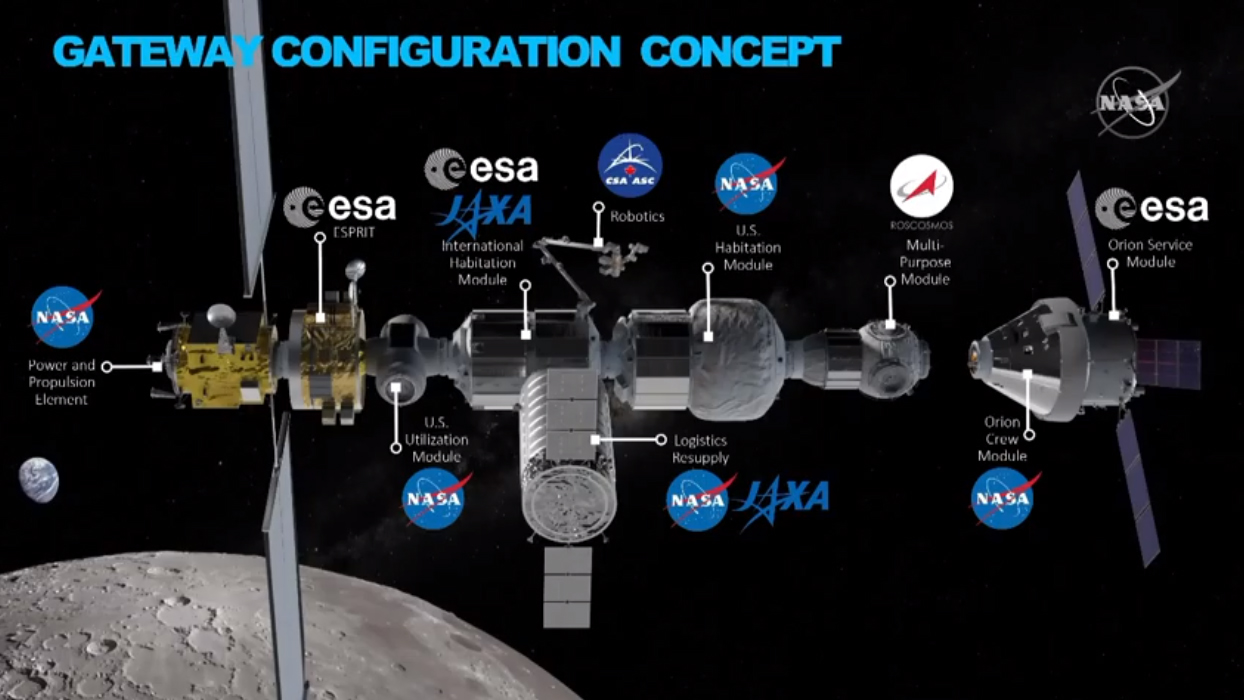US and Japan to Cooperate on Return to the Moon
WASHINGTON — The governments of the United States and Japan have agreed to further cooperation in space which could include flying Japanese astronauts to the moon.
At a joint press conference in Tokyo May 27 with Prime Minister Shinzo Abe, President Donald Trump mentioned cooperation in space exploration as one outcome of their meetings during the president’s visit to the country.
"I am pleased to confirm that Prime Minister Abe and I have agreed to dramatically expand our nations’ cooperation in human space exploration," Trump said. "Japan will join our mission to send U.S. astronauts to space. We'll be going to the moon. We'll be going to Mars very soon. It's very exciting."
Related: Can NASA Really Put Astronauts on the Moon in 2024?

Neither Trump nor Abe elaborated on the nature of that agreement, which was not released. A fact sheet released by the State Department May 27 noted that the two "agreed on the importance of a sustained human presence on and around the moon."
"Building on its International Space Station (ISS) experience, Japanese astronauts will strive to join American astronauts on the moon and destinations beyond," the State Department fact sheet noted.
A cooperative agreement of some kind between the United States and Japan was expected to be signed during Trump's visit. Japan, a major partner on the ISS, had shown an interest in participating in aspects of NASA's renewed push to return to the moon, including contributing modules to the Gateway facility NASA plans to develop in lunar orbit to support human lunar landings.
Get the Space.com Newsletter
Breaking space news, the latest updates on rocket launches, skywatching events and more!
"It's a great pleasure to collaborate with NASA in that endeavor," Hiroshi Yamakawa, president of the Japanese space agency JAXA, said in a video released by NASA May 28 about international cooperation on the development of the Gateway and its overall lunar plans.
In a May 28 tweet, NASA Administrator Jim Bridenstine said he was “very excited” about the agreement announced by Trump and Abe. “Japan and [JAXA] are critical partners in our efforts to go forward to the Moon and on to Mars!”
With NASA accelerating its plans to return humans to the lunar surface by 2024, versus the 2028 date in its previous plans, major roles for international partners will mostly be deferred to the second phase, which will focus on establishing a sustainable human presence on and around the moon after the 2024 landing. That would include contributions such as Gateway modules, which could give contributing countries slots on later lander missions in much the same way ISS partners get crew slots on space station missions.
"Accelerating the landing date to 2024 makes it harder for us to incorporate our international partners early," acknowledged Ken Bowersox, deputy associate administrator for human exploration and operations at NASA, during a May 28 meeting of a NASA Advisory Council committee. "We're still looking at working with our international partners. A lot of their elements were going to come after 2024 anyway."
However, he added that if international partners can accelerate their contributions, "they're welcome to participate in the early phases."
It's unclear if this agreement with have any effect on other aspects of U.S.-Japan space activities, government or commercial, but companies welcome the agreement in any event. An example is Japanese company ispace, which is developing commercial lunar landers and is part of a team led by American company Draper that won one of nine Commercial Lunar Payload Services agreements from NASA last November to transport research payloads to the lunar surface.
"We are thrilled to learn that the U.S. and Japan will deepen its strong relationship in space exploration through a focused effort on lunar exploration," Takeshi Hakamada, founder and chief executive of ispace, said in a statement to SpaceNews. "Alongside our American partner, Draper, ispace is well prepared and eager to support this new endeavor between the U.S. and Japan."
- Read SpaceNews for the Latest Space Industry News
- NASA Taps Maxar to Build Lunar Gateway Power Module for Artemis Moon Plan
- NASA Will Test 5 Habitat Designs for Its Lunar Gateway Space Station
- Read SpaceNews for the Latest Space Industry News
- NASA Taps Maxar to Build Lunar Gateway Power Module for Artemis Moon Plan
- NASA Will Test 5 Habitat Designs for Its Lunar Gateway Space Station
his story was provided by SpaceNews, dedicated to covering all aspects of the space industry.
Join our Space Forums to keep talking space on the latest missions, night sky and more! And if you have a news tip, correction or comment, let us know at: community@space.com.

Jeff Foust is a Senior Staff Writer at SpaceNews, a space industry news magazine and website, where he writes about space policy, commercial spaceflight and other aerospace industry topics. Jeff has a Ph.D. in planetary sciences from the Massachusetts Institute of Technology and earned a bachelor's degree in geophysics and planetary science from the California Institute of Technology. You can see Jeff's latest projects by following him on Twitter.










